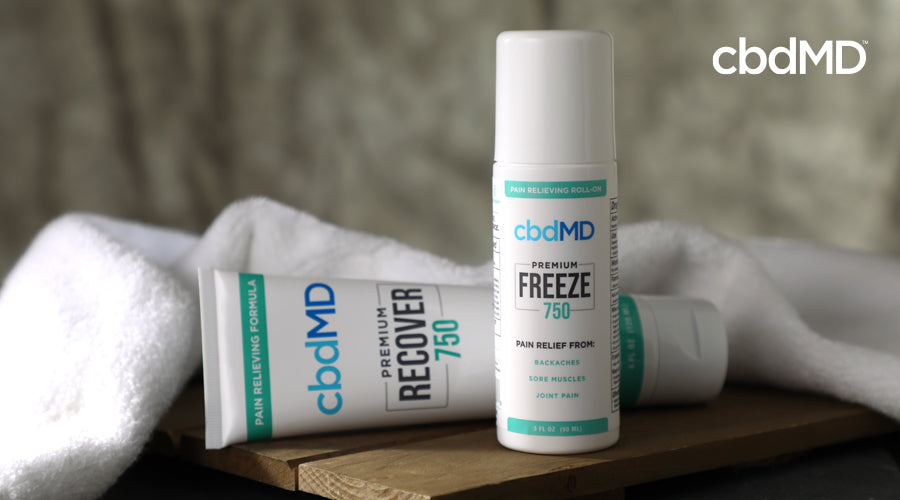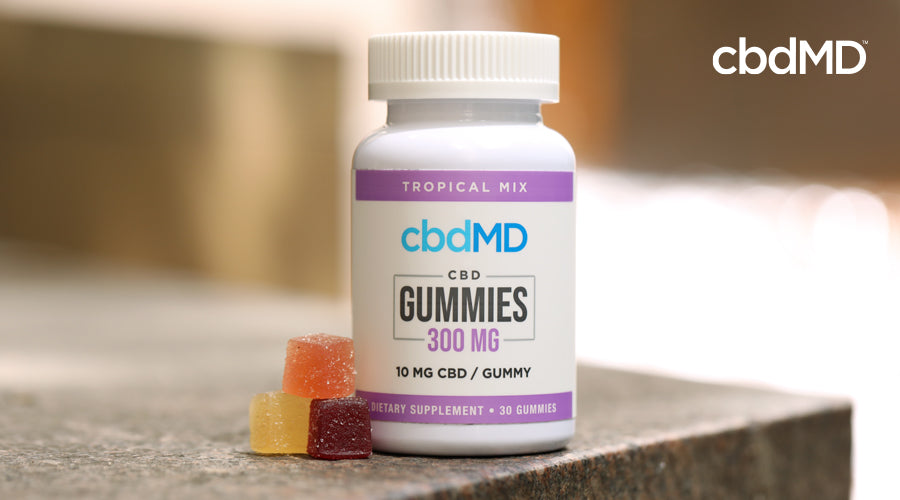You can buy CBD oil in various forms, and each one has a different use based on your needs. You can inhale CBD as a vape oil for a nearly instant effect. Or use a CBD oil tincture to help with stress or a restless night.
But the two most common ways people use CBD are through oral applications and topicals. They contrast with one another considerably – one is used outside of the body while the other works on the inside.
However, whether separately or together, they both work to achieve homeostasis based on your needs and use. And by knowing how these applications work and their advantages, you can better decide if CBD topical vs oral CBD is right for you.

What Are CBD Topicals?
CBD topicals help soothe mild physical discomfort; they’re infused with CBD and applied externally to a specific part of the body. The CBD from these topicals becomes absorbed into the epidermis and pores. And it begins to work with the cannabinoid receptors found in the skin.
Hemp-based CBD topicals may also contain a range of various beneficial nutrients that can help protect the skin from the daily exposure of outside elements. And they are often full of other essential oils and ingredients that invigorate and moisturize the skin.
Many people choose to use CBD topicals because they can quickly and easily apply the wholesome benefits of CBD directly where they need it. And using CBD topically is minimally invasive for CBD newcomers; it doesn’t have to travel throughout the body for it to work.
Because you apply CBD directly to the area of discomfort, the effects are typically immediate and more centralized than other application methods. However, CBD topicals have low bioavailability – no matter how much you apply, your skin isn’t permeable enough for the CBD to reach the bloodstream.

What Is Bioavailability?
With CBD use, bioavailability is your body’s absorption of CBD from the application area to the bloodstream. Some hemp-derived CBD products maximize bioavailability better than others by allowing more CBD to enter the bloodstream without metabolizing or breaking it down.
However, receiving the most benefits from CBD depends on why you choose to use it. Even though CBD topicals don’t possess high bioavailability, they do allow for direct absorption into the affected area.
Our skin serves as a barrier of sorts to keep substances and elements out of our bodies. However, the cannabidiol molecules from CBD topicals don’t need to reach the bloodstream necessarily because they bind and stimulate the CB2 receptors within the skin that make up part of the endocannabinoid system (ECS).

What Are Types Of CBD Topicals?
The several types of CBD topicals include:
- Creams - cbdMD offers CBD creams with its CBD Freeze Pain Relief and Recover Inflammation Cream products. Each one is infused with Superior Broad Spectrum CBD and provides a non-greasy, deep absorption that works soon after contact.
- Lotions - CBD lotions often combine wholesome CBD with moisturizing ingredients to maintain healthy and radiant skin. For example, the CBD Revive Moisturizing Lotion from cbdMD infuses premium CBD with shea butter, passionfruit, acai berry, and other natural oils for maximum moisturizing.
- Balms - CBD balms are also useful for cracked and dry skin. And with the CBD Body Balm from cbdMD, you get 300 milligrams of CBD with the moisturizing effects of cocoa butter, coconut oil, sunflower seed oil, and shea butter – along with the refreshing scent of grapefruit and a stick applicator for easy use.
Other CBD topicals may include a transdermal patch, roll-on applicators such as the award-winning CBD Freeze Roller from cbdMD, and bath bombs.
If your CBD needs are more for internal or cognitive wellness than external or skincare, then taking oral CBD may be a better option.

What Is Oral CBD?
Oral CBD – taking CBD orally – means to consume CBD through your mouth. And there are two primary methods of consuming CBD, sublingually and ingestion.
Sublingually
Commonly referred to as “under-the-tongue,” this method requires drops from CBD oil tinctures placed underneath your tongue and held for 30 to 60 seconds before swallowing. The CBD gets absorbed through the capillaries in your mouth and enters directly into the bloodstream and eventually to the cannabinoid receptors of the ECS.
This method of taking CBD has one of the highest bioavailability percentages in comparison to other CBD applications. Because the CBD molecules are sent straight into the bloodstream through the mucous membranes found in the mouth, they bypass becoming metabolized initially through first-pass metabolism.
Ingestion
Ingesting CBD is to directly swallow CBD either in the form of a pill, softgel, gummy, or other edible means. When eating CBD, the molecules have to first travel through your digestive system and make it to the liver where they are initially broken down; this process is known as the first-pass metabolism.
After the liver metabolizes the CBD, the remaining compounds are then sent to the bloodstream. It’s this reason why ingesting CBD has such low bioavailability; the digestive enzymes break it down into unusable components before reaching the blood. However, research indicates that the effects of ingested CBD last longer than any other application method.
What Are Types Of Oral CBD?
Many types of CBD products created for oral consumption are available:
- Oil tinctures - CBD tinctures are a quick and easy way to integrate CBD into your everyday life. Place a full dropper underneath your tongue and hold it for up to 60 seconds, then swallow. You can use a tincture either in the morning or at night, and you can quickly increase your serving size based on your needs.
- Capsules and softgels - CBD capsules and softgels are probably the most convenient way of ingesting CBD. Take a pill or two with a glass of water at night or in the morning. And there’s no need to overthink about measurements; each pill contains the same amount of CBD oil, so you know how much you’re taking exactly.
- Gummies - CBD gummies are another convenient and delightfully tasty way of getting your daily serving of CBD. Similar to capsules and softgels, each gummy piece has the same amount of CBD infused into it. And with such delicious flavors, the taste may win you over as much as the wholesome CBD benefits.
Most people that take CBD orally enjoy its convenience and simplicity. But again, achieving the best results depends on your purpose for using CBD.

CBD Topical vs. Oral – Which is Better?
If you’re having a challenge deciding which is better between using CBD topically vs. orally, you may need to rethink your question to which one better suits your needs. And between these two methods, there are unique differences you should consider when choosing the best for you.
Using CBD topically allows the cannabidiol compounds to attach to the skin's cannabinoid receptors where the topical cream is applied. It works best if you have a targeted area where you need CBD the most.
With CBD topicals, the cannabinoid compounds never get absorbed into the bloodstream; however, the effects of topical CBD are more concentrated because it isn’t spread thin throughout the entire body. It’s a suitable choice for people trying to relieve minor discomfort in joints and muscles or revitalize skin in distressed areas.
CBD oral application requires the cannabinoid compounds to enter the bloodstream and from there to the endocannabinoid system. They can bind with the cannabinoid receptors that stretch throughout both the central and peripheral nervous systems.
Between taking CBD sublingually and ingesting it, the sublingual method offers faster effects because of its higher bioavailability, which allows more CBD to enter the bloodstream since it avoids the first-pass metabolism. And even though ingesting CBD may not let as many cannabinoids reach the bloodstream, its effect usually lasts longer than any other application method.
Using CBD Topically or Orally
If you’ve recently begun using topical or oral CBD, or you have been using them for a significant amount of time already, we would enjoy hearing of your experiences. Your point of view could be incredibly useful for others learning about CBD, and it can help their needs or wellness goals. Understanding the difference between topical and oral CBD uses are key to getting the most out of a CBD routine.
You can also follow us on Instagram, Facebook, or Twitter. And if you would like to speak to someone directly about cbdMD products or CBD oil in general, you can contact our USA-based customer service team at 1-800-973-3984 – seven days a week.



